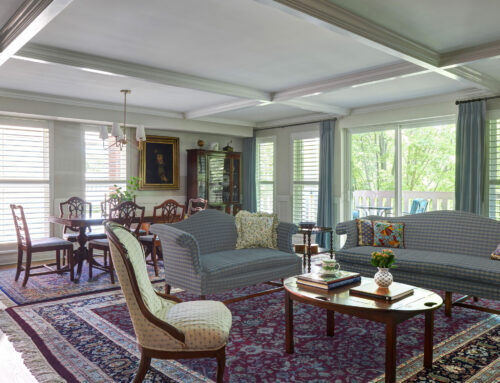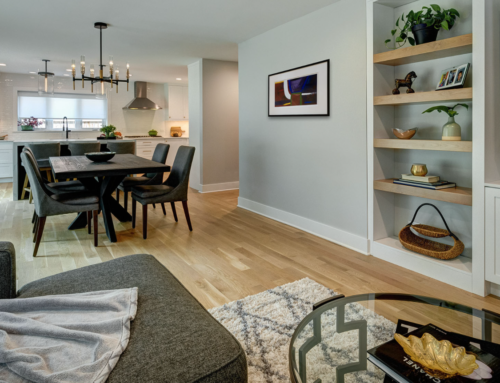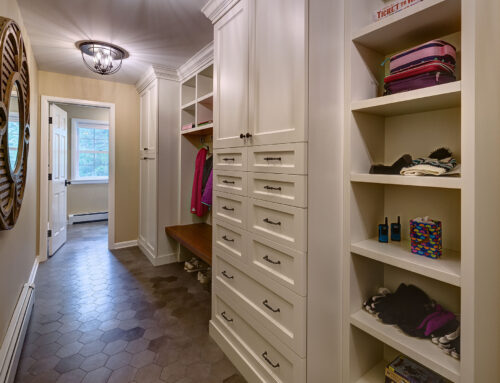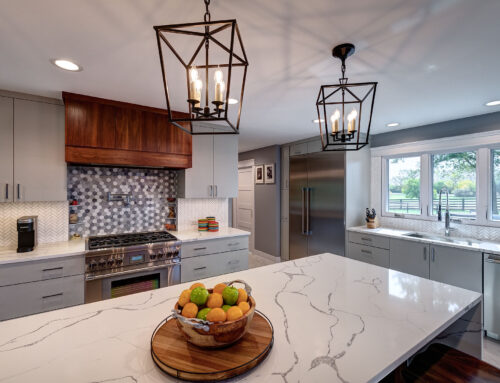This month I would like to talk about the efficient use of space and I am going to re-purpose a blog from a friend and architect Bud Dietrich from Port Richey, Florida.
Many of us with children of a certain age are experiencing a “boomerang generation.” Whether because of a desire to save money, a change in lifestyle, a delay in landing a job after college or some other reason, the boomerang generation is coming back home to live with the baby-boom generation.
This phenomenon isn’t limited to our grown children. Whether because of a downsizing, health issues, or simply the desire to be all under one roof, our parents are also coming home to live with us.
What this means is that our society is undergoing a shift from a time when we went off on our own to going back to sharing living spaces. The thing is, most of our houses weren’t really designed for this. For the most part our houses are designed to be for one set of parents and one set of children. Two or more generations living under one roof is just not what we’ve practiced for the last few generations.
But this shift could be a good thing. And all we need do is expand and rework our homes to accommodate children, grandchildren and/or parents. Reworking existing basements and attics for that boomerang child or parent isn’t all that difficult, nor should it be all that costly.
Below I’ve identified 8 basic ideas for reworking those areas of your home — things like having enough light and space, complying with building codes as well as making sure the new living areas are warm in winter and cool in summer.
As always, consult with a professional before making any structural changes to your house.
1. Add light and space. Most attics are short on ceiling height and, because of the roof shape, usable floor area. So add a dormer for extra ceiling height, usable space and light. A dormer can be small, as in a Cape Cod’s dog house dormer, or large, as in a shed dormer. Certainly one of my favorite dormer shapes is the eyebrow dormer, which you’ll see next.
An eyebrow dormer on the outside lends a relaxed and storybook feature to this home. And this dormer with its diminutive scale looks like an eye as it just starts to open from a good night’s sleep.
While on the inside, this eyebrow dormer makes the perfect place for a small bed.
2. Add more flooring support. Often the floor structure of an attic is designed for the smallest of loads. So some structural upgrading might be required to use the attic as living area. If so, work with an architect to ensure that the new structure complies with your building code.
You wouldn’t want to put all of this great furniture, television, people and more on a structure that simply couldn’t support them.
3. Mind your step. Stairs to an attic or basement can often be less than adequate to safely move people up and down. This means that you may have to rebuild or even add stairs to turn the attic or basement into usable living space. So make sure that the stair complies with local building codes.
An added plus is to have a window at the top of the stairs to bring light down into the home and illuminate the way up.
And a skylight will do just fine if a window can’t be done.
4. Don’t waste space. Though not useful spaces as living area, the spaces under the roof are terrific for creating built-in storage or sleeping alcoves for children.
Certainly the under-the-roof space is perfect for toy storage.
5. Provide a way out. Most, if not all, codes require that bedrooms be equipped with an emergency exit. And even if your local code doesn’t require such an exit, it’s certainly good practice to have one. More often than not I’ve seen basement bedrooms without these exits, and I shudder to think of what could happen if someone got trapped in the room in the event of an emergency.
Have an emergency egress close to the bed.
When possible, use windows that let in abundant natural light.
6. Keep it dry. The new wood walls and trim as well as other materials will act as wicks and soak up moisture from your basement foundation and concrete floor. New walls should be built to prevent this by having a separation between the concrete and the new materials. Your architect, builder and local building department can help with the details to do this.
It would be a shame to see all those wonderful finishes destroyed by too much moisture.
7. Have a bath nearby. Adding a bathroom to either attic or basement often makes a lot of sense. If in the attic, try to stack your plumbing lines to avoid costly plumbing runs. A basement bathroom often means that an ejector pit and pump are necessary. Make sure you have easy access to any new plumbing, so that repairs and replacements can be made without too much hassle.
And if you’re adding a bath to an attic remember, point No. 2 about reinforcing the floor to handle all of that weight you’ll be adding to the existing structure.
8. Heating and cooling. Sometimes it’s impractical to extend the existing systems to heat and cool a newly finished basement or expanded and finished attic. Stand-alone and dedicated systems could be better solutions. My preference is to install radiant heat in the basement floor and a wall-mounted split system for an attic.

Of course, using the existing radiators for heating and opening a window for cooling are about the greenest alternative there is.

Remember I’m always eager to hear your comments. Contact me at Michael@michaelmenn.com or at 847.770.6303.
Best,




































